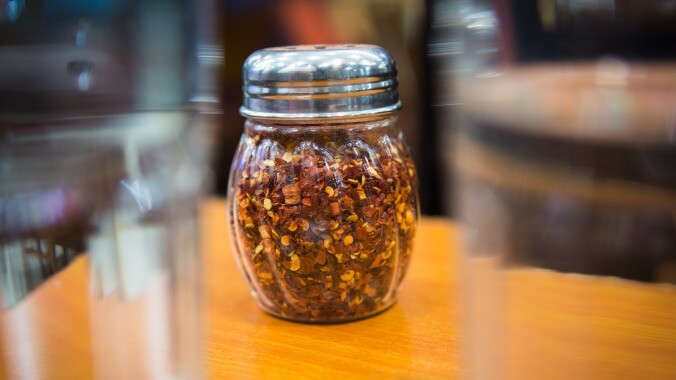We are, truly, a nation of defunct Pizza Huts

Approach the door. It’s an unassuming thing, the glass greased with fingerprints, and the times of opening and closing for each day of the week still stubbornly cling to the smudged surface. Perhaps it’s raining (it’s definitely raining), so fat drops run together on that peaked red roof, racing downward to throw themselves from the edge in a sputtering, dirty stream. You grip the handle, and it opens—no one has locked these doors, for there’s nothing inside to protect. The smell of vinyl hits you as you gaze across the empty booths, the small tables grouped together as if still waiting for a Little League team to arrive for their victory party; the darkened salad bar sits just as expectantly, a few lonely sets of tongs left scattered between the gaping holes where basins of iceberg lettuce and cottage cheese once stood ready. From somewhere, a breath of air stirs, and Book-It coupons trail along the floor like little literary tumbleweeds.
You have entered the ghost of a Pizza Hut. Savor the moment as you would a personal pan pizza.
Like a stuffed crust, the closure of hundreds of Pizza Huts after the Covid-19-related bankruptcy filing of its largest franchisee is a lot to take in. But unlike most of the heavy-handed metaphors 2020 doles out, there’s a way to look at this one as both the death of the American dream and a testament to the resilience of the human spirit capitalism. Enter this Daily Beast interview with Mike Neilson, the mind behind the blog Used To Be A Pizza Hut. You see, where a Pizza Hut falls, flowers tend to spring up through the rubble, and by that we mean sex stores and insurance companies tend to take over and attempt to disguise the Once And Former Hut as something less Hut-ish.
“There are so many old Pizza Huts that are turned into something else that there are very few towns in America that don’t seem to have an old Pizza Hut that is now a laundromat or a title loan place or something like that,” Mike Neilson, owner of the blog Used To Be A Pizza Hut, told The Daily Beast. His blog, as well as a popular subreddit, share pictures of repurposed Pizza Huts.
Sometimes tenants in old Pizza Huts try to disguise the building’s past by painting the roof a color other than red, or surgically removing the pyramid-like structure at the top of the place. They’re not fooling anyone, Neilson argued.
The bravest hearts choose not to run from ghosts, instead embracing what once was and making it a part of what will be.
